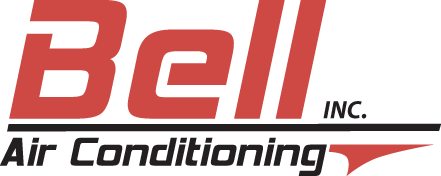
You shouldn’t need to sacrifice comfort or empty your wallet to keep your home at the right temp during hot days.
But what is the right temperature, exactly? We discuss recommendations from energy experts so you can select the best temperature for your residence.
Here’s what we suggest for the most energy-efficient setting for air conditioning in Temple/Belton .
Recommended Thermostat Settings for Summer
Most families find using the thermostat at 72-73 degrees provides ideal comfort. However, if there’s a major difference between your interior and exterior warmth, your electrical expenses will be greater.
This is our advice based on the U.S. Department of Energy (DOE) and ENERGY STAR®.
While at home: 78 degrees. While that appears hot, there are ways you can keep your home pleasant without having the air conditioner running frequently.
Keeping windows and blinds closed during the day keeps cool air where it belongs—within your home. Some window solutions, such as honeycomb shades or plantation shutters, are created to provide more insulation and better energy savings.
If you have ceiling fans in your home, the DOE says you can increase thermostat temperatures about 4 degrees warmer without sacrificing comfort. That’s since they refresh by a windchill effect. Since they cool people, not rooms, turn them off when you leave a room.
If 78 degrees still appears too uncomfortable initially, try running a test for about a week. Begin by increasing your setting to 78 degrees while you’re home. Then, steadily lower it while using the tips above. You may be surprised at how refreshed you feel at a warmer temperature setting.
While away: 88 degrees. There’s no rationale for keeping the air conditioner going all day while your house is unoccupied. Turning the temp 7–10 degrees higher can save you as much as 5–15% on your AC expenses, according to the DOE.
When you arrive home, don’t be tempted to switch your thermostat under 78 to cool your home more quickly. This isn’t useful and often results in a more expensive air conditioner cost.
A programmable thermostat is a good way to keep your temp controlled, but you need to set programs. If you don’t utilize programs, you risk forgetting to move the set temperature when you go.
If you want a convenient remedy, think about installing a smart thermostat. This thermostat works with with your phone, so it is aware when you’re at your house and when you’re gone. Then it intuitively adjusts temperature settings for the biggest savings. How much exactly? An estimated $180 each year on heating and cooling, according to ENERGY STAR.
Another advantage of getting a smart thermostat? You can use your phone to keep an eye on and adjust temperature settings from nearly anywhere.
While sleeping: Around 70 degrees. While ENERGY STAR suggests 82 degrees, that may be unbearable for most families. The majority of people sleep better when their bedroom is chilly, so that’s why the National Sleep Foundation advises 60–67 degrees. But that might be too cold, due to your PJ and blanket preference.
We suggest using a similar test over a week, setting your thermostat higher and slowly turning it down to locate the right temperature for your family. On pleasant nights, you might learn keeping windows open at night and relying on a ceiling fan is a superior solution than running the air conditioner.
More Methods to Save Energy During Hot Weather
There are added methods you can conserve money on energy bills throughout warm weather.
- Install an energy-efficient AC system. Central air conditioners only work for about 12–15 years and get less efficient as they age. A new air conditioner can keep your house comfier while keeping AC bills low.
- Book regular air conditioner service. Regular air conditioner maintenance keeps your system working like it should and may help it work at greater efficiency. It can also help prolong its life cycle, since it enables techs to pinpoint little issues before they create a major meltdown.
- Put in new air filters regularly. Follow manufacturer instructions for changing your air filter. A dirty filter can result in your system short cycling, or turn on and off too often, and raise your electrical.
- Measure attic insulation levels. Just about 90% of homes in the USA don’t have adequate insulation, according to the Insulation Institute. Most southern climates need 13–14” of attic insulation, while northern climates need 16–18”.
- Have your ductwork inspected. Ductwork that has come apart over time can seep conditioned air into your attic, walls or crawl space. This can create huge comfort problems in your home, such as hot and cold spots.
- Seal openings, doors and windows. Keep muggy air where it should be by closing holes. You can also caulk or weather strip doors to trap more cool air inside.
Conserve More Energy During Hot Weather with Bell Air Conditioning Inc
If you are looking to use less energy this summer, our Bell Air Conditioning Inc pros can assist you. Get in touch with us at 254-307-9572 or contact us online for extra details about our energy-saving cooling options.
